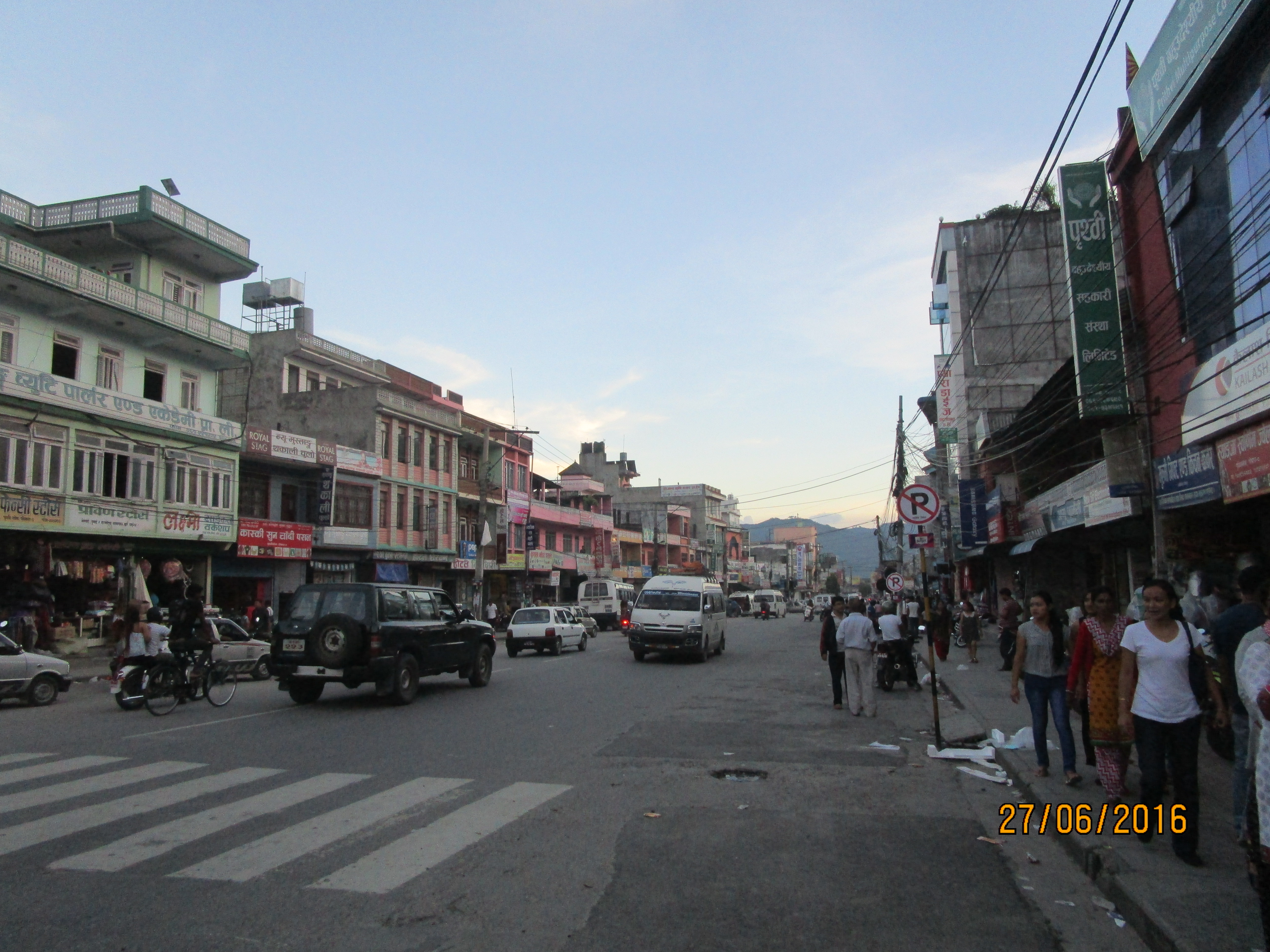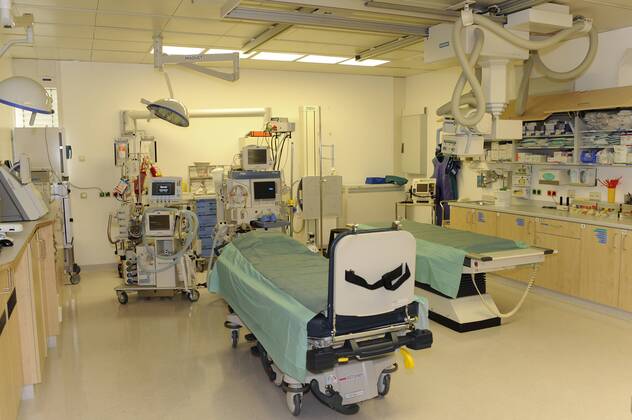|
Foreign Aid To Nepal
Nepal relies heavily on foreign aid, and donors coordinate development aid policy through the Nepal Development Forum, whose members include donor countries, international financial institutions (such as the World Bank), and inter-governmental organizations (such as the United Nations). Japan is Nepal's largest bilateral aid donor, and the World Bank and Asian Development Bank are the largest multilateral donors. Donors have been reported as losing confidence in Nepal as a result of political interference and corruption in poverty relief efforts as well as the country's apparently poor capacity to utilize aid. According to World Bank figures, official development assistance increased from US$8.2 million in 1960 to US$369 million in 2003 and then fell to US$177 million in 2004. According to Nepal's Ministry of Finance, total foreign aid committed in fiscal year (FY) 2003 was US$555 million, with 63.3 percent in grants and 36.7 percent in loans. In FY2004, total foreign aid committed ... [...More Info...] [...Related Items...] OR: [Wikipedia] [Google] [Baidu] |
Nepal
Nepal (; ne, नेपाल ), formerly the Federal Democratic Republic of Nepal ( ne, सङ्घीय लोकतान्त्रिक गणतन्त्र नेपाल ), is a landlocked country in South Asia. It is mainly situated in the Himalayas, but also includes parts of the Indo-Gangetic Plain, bordering the Tibet Autonomous Region of China to the north, and India in the south, east, and west, while it is narrowly separated from Bangladesh by the Siliguri Corridor, and from Bhutan by the Indian state of Sikkim. Nepal has a diverse geography, including fertile plains, subalpine forested hills, and eight of the world's ten tallest mountains, including Mount Everest, the highest point on Earth. Nepal is a multi-ethnic, multi-lingual, multi-religious and multi-cultural state, with Nepali as the official language. Kathmandu is the nation's capital and the largest city. The name "Nepal" is first recorded in texts from the Vedic period of the India ... [...More Info...] [...Related Items...] OR: [Wikipedia] [Google] [Baidu] |
Technical Assistance
Development aid is a type of foreign/international/overseas aid given by governments and other agencies to support the economic, environmental, social, and political development of developing countries. Closely-related concepts include: developmental aid, development assistance, official development assistance, development policy, development cooperation and technical assistance. It is distinguished from humanitarian aid by aiming at a sustained improvement in the conditions in a developing country, rather than short-term relief. Development aid is thus widely seen as a major way to meet Sustainable Development Goal 1 (end poverty in all its forms everywhere) for the developing nations. Aid may be bilateral: given from one country directly to another; or it may be multilateral: given by the donor country to an international organisation such as the World Bank or the United Nations Agencies (UNDP, UNICEF, UNAIDS, etc.) which then distributes it among the developing countries. The ... [...More Info...] [...Related Items...] OR: [Wikipedia] [Google] [Baidu] |
Organization Of Petroleum Exporting Countries
The Organization of the Petroleum Exporting Countries (OPEC, ) is a cartel of countries. Founded on 14 September 1960 in Baghdad by the first five members (Iran, Iraq, Kuwait, Saudi Arabia, and Venezuela), it has, since 1965, been headquartered in Vienna, Austria, although Austria is not an OPEC member state. , the 13 member countries accounted for an estimated 44 percent of global oil production and 81.5 % of the world's proven oil reserves, giving OPEC a major influence on global oil prices that were previously determined by the so-called " Seven Sisters" grouping of multinational oil companies. The formation of OPEC marked a turning point toward national sovereignty over natural resources, and OPEC decisions have come to play a prominent role in the global oil market and international relations. The effect can be particularly strong when wars or civil disorders lead to extended interruptions in supply. In the 1970s, restrictions in oil production led to a dramatic ri ... [...More Info...] [...Related Items...] OR: [Wikipedia] [Google] [Baidu] |
Ford Foundation
The Ford Foundation is an American private foundation with the stated goal of advancing human welfare. Created in 1936 by Edsel Ford and his father Henry Ford, it was originally funded by a US$25,000 gift from Edsel Ford. By 1947, after the death of the two founders, the foundation owned 90% of the non-voting shares of the Ford Motor Company. (The Ford family retained the voting shares.) Between 1955 and 1974, the foundation sold its Ford Motor Company holdings and now plays no role in the automobile company. Ahead of the foundation selling its Ford Motor Company holdings, in 1949, Henry Ford II created the , a separate corporate foundation that to this day serves as the philanthropic arm of the Ford Motor Company and is not associated with the foundation. The Ford Foundation makes grants through its headquarters and ten international field offices. For many years, the foundation's financial endowment was the largest private endowment in the world; it remains among the wealthie ... [...More Info...] [...Related Items...] OR: [Wikipedia] [Google] [Baidu] |
Chitwan
Chitwan District (, , ) is one of 77 districts of Nepal, and takes up the southwestern corner of Bagmati Province. Bharatpur, largest city of Nepal after Kathmandu, is its administrative centre. It covers . In 2011 it had a population of 579,984 (279,087 male and 300,897 female) people. In 2021 it had a population of 722,168 (354,071 male and 368,097 female) people. Bharatpur is the commercial and service centre of South Central Nepal and a major destination for higher education, health care and transportation in the region. Chitwan lies in the Terai region of Nepal. It is in the drainage basin of the Gandaki River and is roughly triangular, taking that river as its meandering northwestern border, and a modest watershed border, with India, as the basis of its southern limit. Local government: Bharatpur Metropolitan,Rapti Municipality,Ratnanagar Municipality, Kalika Municipality, Madi Municipality, Ikshyakamana Gaupalika History The district takes its name from the Chitwan Va ... [...More Info...] [...Related Items...] OR: [Wikipedia] [Google] [Baidu] |
Birendra International Convention Center
Birendra Bir Bikram Shah Dev ( ne, श्री ५ महाराजाधिराज वीरेन्द्र वीर विक्रम शाह देव ) (28 December 1945 – 1 June 2001) was the tenth Shah Ruler and the King of Nepal from 1972 until his assassination in 2001. He was the eldest son of King Mahendra. Early life and education Birendra was born at the Narayanhiti Royal Palace in Kathmandu as the eldest son of the then Crown Prince Mahendra Bir Bikram Shah Dev and his first wife, Crown Princess Indra Rajya Lakshmi Devi. Birendra spent eight years studying at St Joseph's School, a Jesuit school in Darjeeling, with his brother Gyanendra. On 13 March 1955, their grandfather King Tribhuvan died and their father succeeded the Nepalese throne. With his father's ascension, Birendra became the crown prince of Nepal. In 1959, Birendra was enrolled at Eton College in the United Kingdom. After studying at Eton until 1964, he returned to Nepal where he be ... [...More Info...] [...Related Items...] OR: [Wikipedia] [Google] [Baidu] |
East-West Highway (Nepal)
Mahendra Highway (), also called East-West Highway () runs across the Terai geographical region of Nepal, from Mechinagar in the east to Bhim Datta in the west, cutting across the entire width of the country. It is the longest highway in Nepal and was constructed by cooperation of various countries. Overview The highway is mostly a single lane in each direction. It is a major infrastructure element because east–west travel was previously limited to the Hulaki Highway built during the Rana regime, expensive and limited air travel, or Nepalese trains and buses. The highway crosses the Terai from east to west for over . Connecting Nepal from Kakarbhitta (Mechinagar Municipality) to West Mahendra Nagar in the east, this is the longest highway in Nepal till now. Bharatpur city and Chitwan valley are located towards the central part of this highway. The major destinations along and around the highway are Mechinagar, Bhadrapur, Itahari, Janakpur, Bharatpur, Butwal, Siddharthanag ... [...More Info...] [...Related Items...] OR: [Wikipedia] [Google] [Baidu] |
Hydroelectric Plant
Hydroelectricity, or hydroelectric power, is electricity generated from hydropower (water power). Hydropower supplies one sixth of the world's electricity, almost 4500 TWh in 2020, which is more than all other renewable sources combined and also more than nuclear power. Hydropower can provide large amounts of low-carbon electricity on demand, making it a key element for creating secure and clean electricity supply systems. A hydroelectric power station that has a dam and reservoir is a flexible source, since the amount of electricity produced can be increased or decreased in seconds or minutes in response to varying electricity demand. Once a hydroelectric complex is constructed, it produces no direct waste, and almost always emits considerably less greenhouse gas than fossil fuel-powered energy plants. [...More Info...] [...Related Items...] OR: [Wikipedia] [Google] [Baidu] |
Siddhartha Highway
Siddhartha Highway ( ne, सिद्धार्थ राजमार्ग, also referred to as H10, now renamed NH 047) is a major highway in Nepal that connects the Terai region in southern Nepal with the mountain region in northern Nepal. The highway starts at Nepal–India border near Siddharthanagar and terminates at Pokhara. This highway intersects with the east–west Mahendra Highway at Butwal. The highway construction was started in 1964 and completed in 1971.It was inaugurated by king Birendra on 9 May 1972 CE(25 Baisakh 2029 BS) in Pokhara.It was constructed with Indian assistance. The highway consists of about 34 bridges with the longest bridge over the Kali Gandaki River in Ramdi. The highway takes its name from Siddhartha Gautam (Gautama Buddha). The highway was funded by the government of India. Route description The length of highway is . The major settlements on the highway are Siddharthanagar, Butwal, Tansen, Waling, Putalibazar, Syangja Syangja Dis ... [...More Info...] [...Related Items...] OR: [Wikipedia] [Google] [Baidu] |
Tribhuvan Highway
The Tribhuvan Highway () connects the outskirts of Kathmandu, the capital of Nepal, with Birganj/Raxaul on the Nepal-India border. NH 28 and NH 28A links Raxaul with Lucknow/Barauni and other locations in India. History Known informally as Byroad, the Tribhuvan Highway is the oldest and the first highway of Nepal and it links Naubise, west of Kathmandu with the Indian border at Birgunj/Raxaul. It was named in memory of King Tribhuvan (1906–1955). Its construction was completed with Indian assistance in 1956, and it provided the first serviceable road connection with India. The first regular daily bus service on the highway was operated by Nepal Transport Service in 1959. The bus route ended at the railway station at Amlekhganj, from where travellers took the Nepal Government Railway (NGR) the rest of the way to Birgunj and Raxaul. Before Tribhuvan Highway was built, travelers used the historic trade route passing through Kulekhani, Chitlang, Chandragiri Pass and Thankot. ... [...More Info...] [...Related Items...] OR: [Wikipedia] [Google] [Baidu] |
Trauma Center
A trauma center (or trauma centre) is a hospital equipped and staffed to provide care for patients suffering from major trauma, major traumatic injuries such as Falling (accident), falls, motor vehicle collisions, or gunshot wounds. A trauma center may also refer to an emergency department (also known as a "casualty department" or "accident and emergency") without the presence of specialized services to care for victims of major trauma. In the United States, a hospital can receive trauma center status by meeting specific criteria established by the American College of Surgeons (ACS) and passing a site review by the Verification Review Committee. Official designation as a trauma center is determined by individual state law provisions. Trauma centers vary in their specific capabilities and are identified by "Level" designation: Level I (Level-1) being the highest and Level III (Level-3) being the lowest (some states have five designated levels, in which case Level V (Level-5) is the ... [...More Info...] [...Related Items...] OR: [Wikipedia] [Google] [Baidu] |
.jpg)




